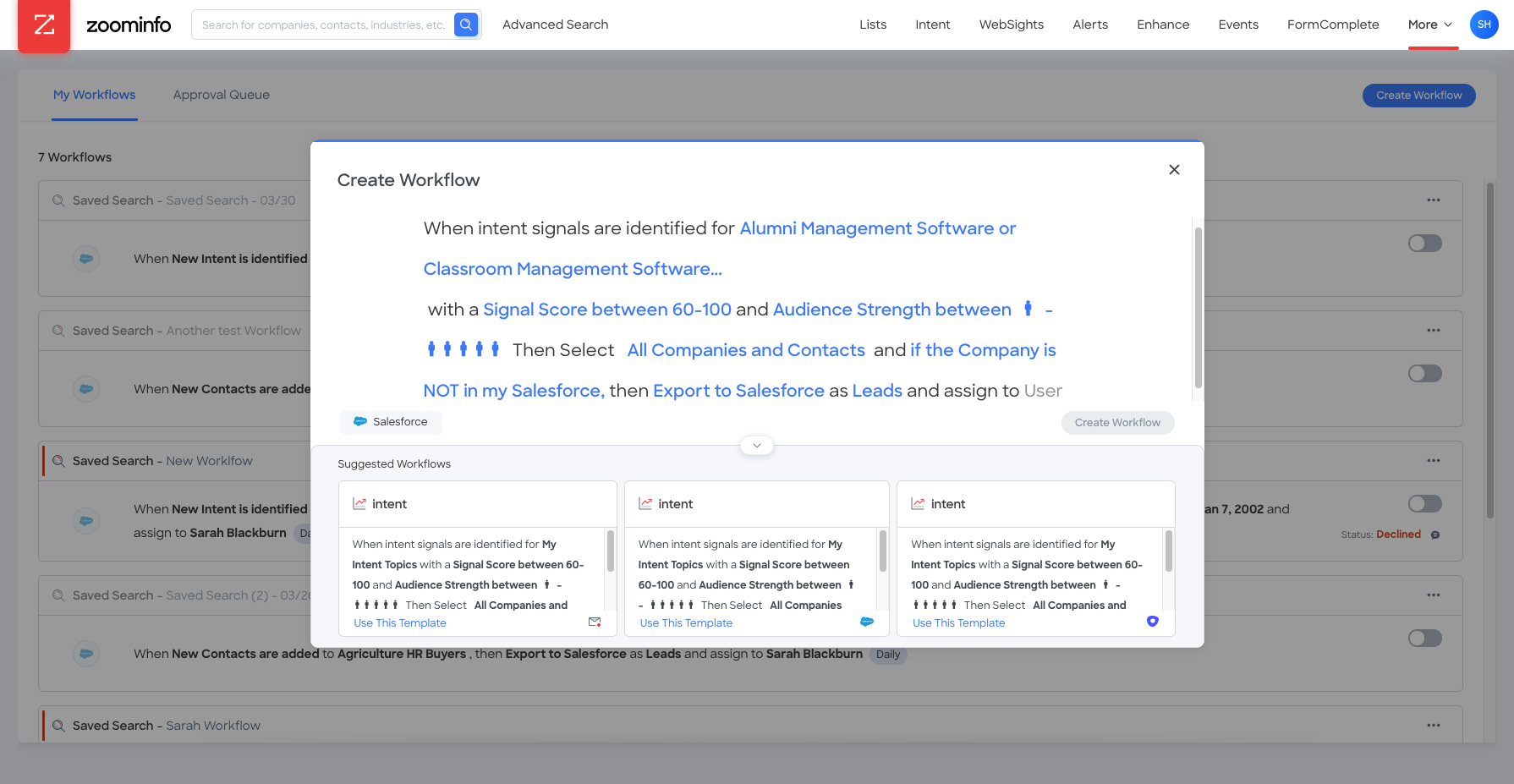

Using account-based marketing strategies with ZoomInfo helps you get around these problems. Prior to a lead revealing themselves, marketing and sales teams are left to guess about the quality of their campaigns based on aggregate traffic statistics like time on page, pages per session, and bounce rate. Further to this, marketing in a B2B context is only able to prove the value of its campaigns once a lead becomes known through an incoming call, email, or form. As a result, it no longer makes sense for digital marketing teams in the B2B space to flush money down the drain doing blind keyword advertising hoping that a 10% click rate will garner a lead from their target market. Paid advertising costs are rising, and recent privacy policy changes diminish the available information on advertising platforms. ZoomInfo allows them to define what the total market is for their goods and services before even starting the campaign. Rarely, if ever, do they start with an entire list of available companies in their market. Usually, digital marketing teams start with a broad net, with particular industries in mind. This may seem counterintuitive and involves rethinking how your marketing team builds and structures campaigns. ZoomInfo allows marketing teams to do something they don’t often do: start with a target list of specific companies before starting the campaign.

Incorporating ZoomInfo in Your Account-Based Marketing Strategy allows you to weed out less-valuable companies early on and ensure Marketing and Sales are in complete alignment - in return, your team can leap into the critical processes of engaging and delighting those accounts much faster.” Ultimately, account-based marketing involves a focused approach to prospect targeting, so that you can go after companies with a better “fit” in order to increase the chances of conversion. As HubSpot explains: “Account-based Marketing (ABM) is a focused growth strategy in which Marketing and Sales collaborate to create personalized buying experiences for a mutually-identified set of high-value accounts. To more effectively market their products and increase lead conversion rates, business-to-business (B2B) marketing teams are increasingly turning to account-based marketing strategies.


 0 kommentar(er)
0 kommentar(er)
